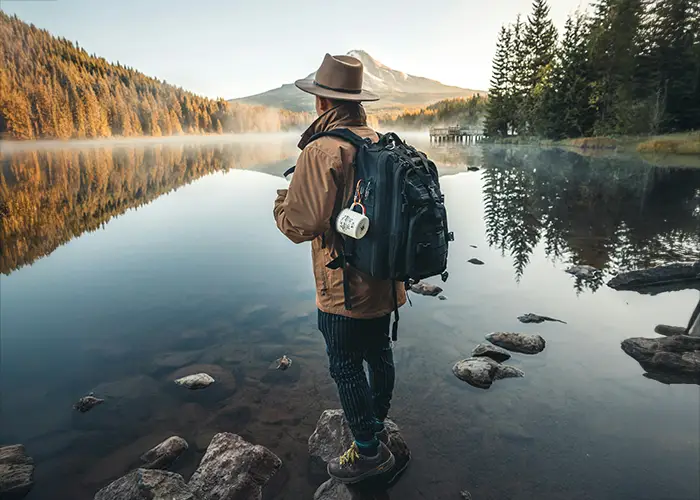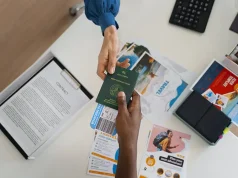
Travel often feels like a careful balance between planning and spontaneity. Many trips become more enjoyable when the experience flows naturally rather than being overly structured.
Small choices along the way tend to shape the journey in meaningful ways. Those choices can make every destination feel lighter, more memorable, and more relaxed.
Understanding What You Truly Want From Each Trip
Many travelers begin their journey with a vague idea of what they hope to experience, yet clarity often brings a richer outcome. When priorities are understood early, the path through each city or region feels smoother and far less stressful. Small preferences like food, museums, or natural spaces quietly influence the direction of each day.
Travelers often find that writing down two or three personal interests helps shape an itinerary without controlling it. This gentle structure opens space for wandering side streets or discovering local traditions that might otherwise be missed. The goal remains to create enough shape without narrowing the fun.
Balancing Comfort With Curiosity
Most trips become memorable when comfort meets a gentle sense of adventure. Travelers who enjoy familiar routines can keep them, while inviting curiosity in small, manageable doses.
This blend often supports smoother transitions between new environments and known comforts. Some people discover that, by exploring affordable bongs as casually as they might browse snacks or travel gadgets, they feel less pressure to “perform” the role of a perfect tourist. This is because experience becomes just another relaxed part of the day.
The idea is about treating unfamiliar surroundings with a soft, open mindset. That same ease can guide choices about cafés, street food, or parks, letting curiosity unfold naturally without stress.
Packing Light Without Feeling Deprived
Packing light often feels intimidating, yet it grants a surprising sense of freedom. Smaller bags make movement easier on trains, buses, and cobblestone streets that can quickly drain energy when overloaded. Travelers frequently notice that they use far fewer items than expected once the trip begins.
The secret lies in choosing versatile clothing that works across different temperatures and settings. Once that foundation is set, every new location feels more accessible because the weight of the journey decreases. A light pack creates more room for spontaneous finds like handmade crafts, books, or small souvenirs collected along the way.
Finding Joy In Local Transportation
Public transportation can transform the way a place is understood. Whether it is a tram gently weaving through narrow streets or a metro gliding under a bustling city, these systems offer an intimate look into daily life. Travelers often find quiet delight in people-watching or observing the natural rhythm of commuters.
Riding local transport can shift the pace of the trip, allowing more time to absorb the surroundings. Buses and trams reveal corners of neighborhoods that may not appear on tourist maps. This slower approach often invites unexpected conversations, small discoveries, and warm interactions that linger long after the return home.
Choosing Experiences Over Checklists
Many travelers feel pressured to see every landmark, yet meaningful moments frequently grow from unplanned experiences. Wandering markets, talking with locals, or sipping coffee in a quiet square often stays in memory far longer than rushing between crowded spots. Those gentle pauses create emotional space that deepens appreciation of each destination.
Some people enjoy choosing just a few structured activities, allowing the rest of the day to unfold naturally. This approach protects energy and helps avoid burnout during longer trips. When expectations lighten, joy tends to surface more easily.
Letting Food Shape The Mood Of The Day
Meals often serve as anchor points during travel, grounding the rhythm of each day. A simple breakfast near the accommodation might offer a glimpse into the local pace, while lunch on a busy street reveals the heartbeat of the community. Food has a way of stitching different moments together into a coherent story.
Trying new dishes sparks fresh appreciation for regional traditions. Even those who prefer familiar flavors can find comfort by choosing restaurants with menus that blend local ingredients with recognizable preparation styles. Food becomes the gentle bridge between the traveler and the culture.

Keeping A Flexible Budget
Smart travel does not mean restricting enjoyment. It means directing money toward the experiences that matter most. Some travelers enjoy small luxuries like a scenic boat ride or a high-quality meal, while saving through simple choices like staying in smaller guesthouses or using local transport.
A flexible budget allows spontaneous moments without guilt. Street vendors, local craft markets, or neighborhood bakeries often provide affordable delights that bring the spirit of a place to life. By shifting spending thoughtfully, every trip can feel generous and fulfilling.
The return journey often feels bittersweet, yet it carries a quiet sense of transformation. New perspectives, favorite flavors, and unexpected encounters often find their way into everyday life. That gentle shift keeps the spirit of travel alive long after unpacking.
Travel offers more than destinations. It shapes new rhythms, teaches patience, and deepens appreciation for both familiar and unfamiliar spaces. When approached with openness, flexibility, and curiosity, every journey becomes a rich blend of comfort and adventure that keeps the fun alive from beginning to end.





